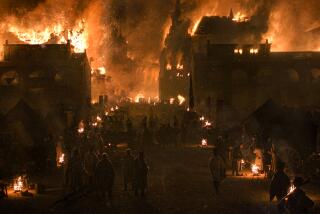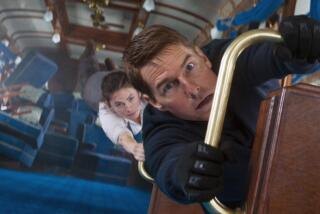Keeping period pieces on track
From early on, it became clear to Arthur J. Miller Jr.’s social worker mother and nuclear physicist father that their son would not follow in either of their footsteps. Despite his mother’s meaningful line of work and his father’s contributions to the Manhattan Project and the space program, their son showed an obsession with working on the railroad.
“There is an art and beauty to not only trains but to the facilities that they use and the scenery that they go through,” says Tennessee-born Miller, who is now a 58-year-old train master and railroad consultant based in Alabaster, Ala. “You just look at a railroad train, be it a passenger train or a freight train, and it’s so efficient compared to anything else.”
Miller’s professional journey has included detours as a broadcast news anchor and congressional staffer, but he has never strayed too far from the tracks. He was in graduate school at the University of Tennessee studying transportation and business logistics when he got a call to do some scouting for “Throw Momma From the Train” in the mid-1980s. Since then, he’s worked as a railroad coordinator on more than 80 projects, including “Schindler’s List,” “Courage Under Fire” and “Honeydripper.”
Recently, he made sure that the trains ran on time on the North Carolina sets of George Clooney’s 1920s-set football film “Leatherheads,” which opened in theaters Friday.
Letting off steam: As an evocative slice of Americana, trains help set the scene for “Leatherheads.” “Period trains create a very powerful image that takes audiences into the time period of the movie,” says Miller. “Mr. Clooney has used them in several of his films to create that undeniable period feeling, and in ‘Leatherheads,’ railroads are seen almost throughout the movie because the team travels by train.”
The gravy train: “Leatherheads” shot a large portion of the train scenes at the North Carolina Transportation Museum, located in the town of Spencer. “Collectively, the film company left the museum with improvements worth more than $50,000,” says Miller. “The historic coaches were redecorated on the outside and improved on the interior, and the steam locomotive received expensive cosmetic modifications. It needed some work to make it look like it was really in service. As a railroad coordinator who has a historic preservation gene, when we can do this and leave museums not only with money for operations, but when we can make physical improvements to their collections, it’s very satisfying.”
Standard operating procedure: Gauge and track structure was standardized across the U.S. more than a century ago, so the period trains could easily make the 180-mile journey to a second filming location in Rural Hall, N.C. “That standardization of gauges was something that came out of the Civil War,” explains Miller. “There were a half-dozen different gauges, but after the Civil War, we settled down to two, and the bigger one is the one that survived.”
Track record: On “Leatherheads,” Miller’s company celebrated its 100,000th accident-free hour on a movie set. “. “We install railroad workplace procedures, which are a little more strict than the film industry,” he says. “People run regularly on a film set, but because of tracks and unsure footing around railroad locations, the [railroad] industry just says no running. We have a rule in the railroad business that you step over the rails, never on them, because they can be slick. Even a small trip off the head of a rail and you’ll be best friends with an orthopedic surgeon for the next year or so. But this was a first-rate crew, and it was easy. Easiest one I’ve ever done, frankly.”
More to Read
Sign up for The Wild
We’ll help you find the best places to hike, bike and run, as well as the perfect silent spots for meditation and yoga.
You may occasionally receive promotional content from the Los Angeles Times.






